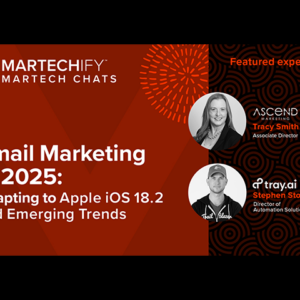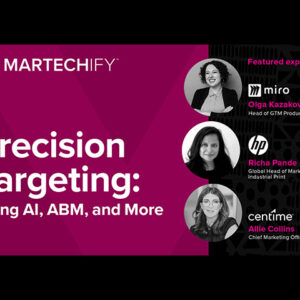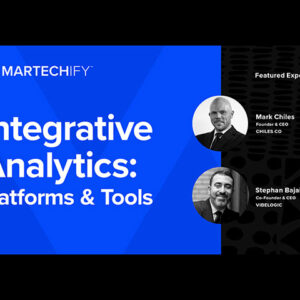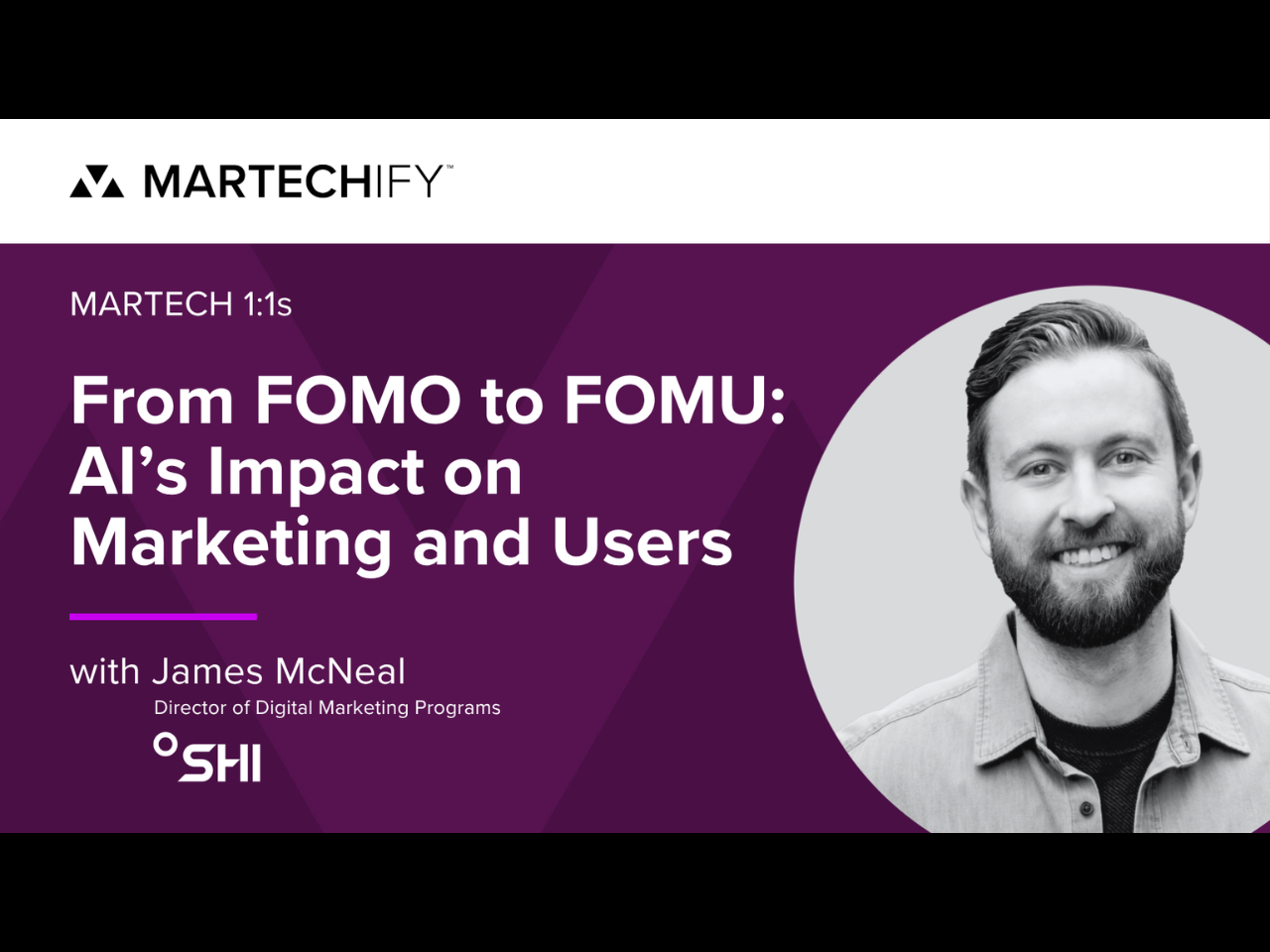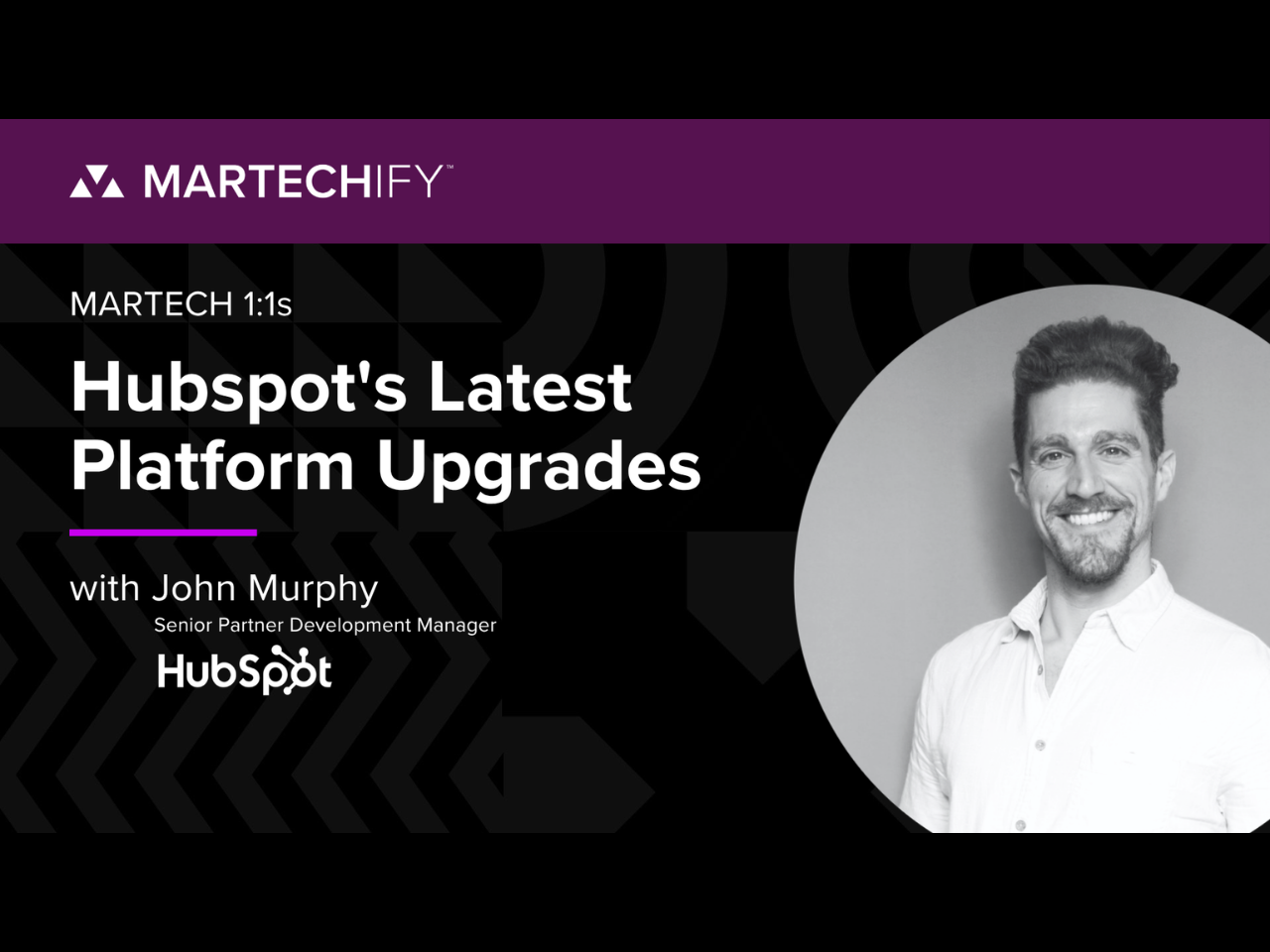From Data to Decisions: Prioritizing Intent-Based SEO and AI-Driven Personalization
- Nicole Ramirez, Director of Growth Solutions at Unlock Health
- Customer Experience (CX), Data Management and Analytics, Digital Transformation, Strategy and Trends
In anticipation of World Healthcare Day, the Martechify team reached out to several leading healthcare marketing experts and asked them to share their predictions and insights on how martech is shaping healthcare experiences in 2025. We sat down with Nicole Ramirez, Director of Growth Solutions at Unlock Health, to hear her thoughts on:
1. The future of patient engagement: How can martech be leveraged for better outcomes in 2025?
2. Navigating compliance and personalization: What will be martech’s impact on healthcare marketing in 2025?
1. The future of patient engagement: How can martech be leveraged for better outcomes in 2025?
2. Navigating compliance and personalization: What will be martech’s impact on healthcare marketing in 2025?
Here is what we’ve learned…
Prediction for 2025: AI-powered personalization and SEO will redefine patient engagement
Patient engagement is moving quickly towards being driven by AI-powered personalization, search optimization, and data-driven insights, which help healthcare organizations connect with patients before they even step into a provider’s office. If you’re not meeting patients where they’re searching, you’re losing them to competitors.
Dr. Google isn’t going away. Patients will continue searching for symptoms, providers, and treatments long before booking an appointment. To stay ahead, healthcare organizations must prioritize SEO, AI-driven content strategies, and personalized engagement tools.
Search intent is about delivering the right answers at the right time, more than just ranking.
That means leveraging:
– Structured data and featured snippets to surface relevant information
– Conversational AI and chatbots for real-time engagement
– Local SEO and optimized provider bios to capture high-intent searches
Hospitals that invest in search-first engagement have seen major gains in patient acquisition. For example, appearing in searches like “urgent care near me,” “best cardiologist in [city],” or “signs of premenopause” leads to higher appointment conversions.
AI-driven personalization will take this even further. Instead of generic appointment reminders, expect dynamically generated follow-ups based on search history, behavioral triggers, and patient journey insights.
A patient researching physical therapy after an ACL injury should see:
– Retargeting ads for rehab services
– Localized provider directories
– Post-op recovery guides
The winning strategy in 2025? Martech-powered engagement meets intent-based SEO. If you’re not showing up when patients are searching, someone else will.
Dr. Google isn’t going away. Patients will continue searching for symptoms, providers, and treatments long before booking an appointment. To stay ahead, healthcare organizations must prioritize SEO, AI-driven content strategies, and personalized engagement tools.
Search intent is about delivering the right answers at the right time, more than just ranking.
That means leveraging:
– Structured data and featured snippets to surface relevant information
– Conversational AI and chatbots for real-time engagement
– Local SEO and optimized provider bios to capture high-intent searches
Hospitals that invest in search-first engagement have seen major gains in patient acquisition. For example, appearing in searches like “urgent care near me,” “best cardiologist in [city],” or “signs of premenopause” leads to higher appointment conversions.
AI-driven personalization will take this even further. Instead of generic appointment reminders, expect dynamically generated follow-ups based on search history, behavioral triggers, and patient journey insights.
A patient researching physical therapy after an ACL injury should see:
– Retargeting ads for rehab services
– Localized provider directories
– Post-op recovery guides
The winning strategy in 2025? Martech-powered engagement meets intent-based SEO. If you’re not showing up when patients are searching, someone else will.
Prediction for 2025: The compliance-personalization balancing act in healthcare marketing—and why SEO is your best tool
Navigating the intersection of compliance, personalization, and search will be a defining challenge for healthcare marketers in 2025. As patients demand more tailored digital experiences, healthcare organizations must find innovative ways to deliver personalized, high-value content while staying HIPAA-compliant and privacy-conscious.
The reality is that patients don’t wait until they see a doctor to get information. They are immediately turning to Google to research their symptoms. Studies show that over 70% of patients research their health online before making a healthcare decision. This means that SEO, content marketing, and search-driven patient acquisition strategies must take center stage.
With third-party cookies disappearing and privacy regulations tightening, healthcare marketers must shift to first-party and zero-party data strategies. The most effective ways to do this are SEO-optimized content hubs, gated health assessments, and AI-driven chat experiences that capture patient interest before they even consider booking an appointment.
For example, rather than retargeting a patient after they visit your website, an optimized search strategy allows you to capture them earlier in their journey. When they are actively researching their symptoms, treatments, or best providers near them. This means that if a healthcare system wants to dominate patient acquisition, it must own high-intent search queries like “best dermatologist for acne scars” or “signs of thyroid problems.”
Additionally, search visibility will play a critical role in trust and compliance. Patients are more likely to engage with a provider that appears in Google’s featured snippets, has strong E-E-A-T (Experience, Expertise, Authority, Trustworthiness) signals, and showcases real patient testimonials. Instead of just focusing on paid campaigns, organic visibility must be part of every healthcare marketing strategy.
In 2025, healthcare organizations that master compliant personalization and a robust search strategy will dominate patient acquisition, build trust, and stay ahead of competitors. If your healthcare brand isn’t showing up before the patient walks into your office, you’ve already lost them.
The reality is that patients don’t wait until they see a doctor to get information. They are immediately turning to Google to research their symptoms. Studies show that over 70% of patients research their health online before making a healthcare decision. This means that SEO, content marketing, and search-driven patient acquisition strategies must take center stage.
With third-party cookies disappearing and privacy regulations tightening, healthcare marketers must shift to first-party and zero-party data strategies. The most effective ways to do this are SEO-optimized content hubs, gated health assessments, and AI-driven chat experiences that capture patient interest before they even consider booking an appointment.
For example, rather than retargeting a patient after they visit your website, an optimized search strategy allows you to capture them earlier in their journey. When they are actively researching their symptoms, treatments, or best providers near them. This means that if a healthcare system wants to dominate patient acquisition, it must own high-intent search queries like “best dermatologist for acne scars” or “signs of thyroid problems.”
Additionally, search visibility will play a critical role in trust and compliance. Patients are more likely to engage with a provider that appears in Google’s featured snippets, has strong E-E-A-T (Experience, Expertise, Authority, Trustworthiness) signals, and showcases real patient testimonials. Instead of just focusing on paid campaigns, organic visibility must be part of every healthcare marketing strategy.
In 2025, healthcare organizations that master compliant personalization and a robust search strategy will dominate patient acquisition, build trust, and stay ahead of competitors. If your healthcare brand isn’t showing up before the patient walks into your office, you’ve already lost them.


